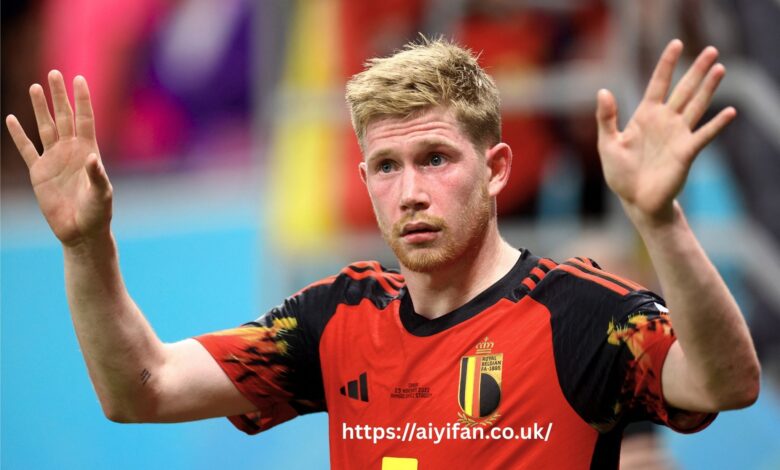Kevin De Bruyne Injury Analysis Can Pep Guardiola’s Team Cope Without Him?

If you’ve watched Manchester City over the last decade, you know that when Kevin De Bruyne is humming, the whole attack starts to breathe easier. The early cross that bends away from a centre-back’s forehead, the flat corner that skims shoulder-high, the no-backlift slap pass into a runner’s stride he made goals feel inevitable.
But the truth is that City have already been living with (and learning from) versions of life without him for a while. The hamstring tear that snapped in the 2023 Champions League final was the red flag; surgery in August 2023 and a five-month layoff followed, before a January 2024 return. He then managed spells of brilliant form mixed with more niggles most notably a thigh/groin issue that interrupted autumn 2024.
And now the page has properly turned: in April 2025 De Bruyne confirmed he would leave City at season’s end, and in June he signed for Napoli on a free transfer. That’s not a rumor mill hiccup that’s official from City, Napoli, ESPN, and Sky Sports.
So the question isn’t just “how do they cope while he recovers?” It’s “how do they evolve for an entire season and beyond without him?”
What City actually lose without De Bruyne
Let’s be blunt: you don’t replace the best final-ball merchant of his generation by copying and pasting a new No. 17.
- Elite chance creation and set-piece threat. By April 2025, De Bruyne sat second all-time in Premier League assists (118) with the best minutes-per-assist rate in the league’s history among regulars (one every 177 minutes). That’s freakish production, and it stretches back years, not a hot twelve-month streak.
- Tempo shifts on demand. He could play as an 8, 10, or improvised right-sider, toggling between quick vertical punches and patient circulation.
- Big-game shot creation. The cut-back patterns, the whipped half-spaces crosses to Haaland’s blind-side run those made City terrifying against deep blocks and on counters alike.
If you’re wondering whether City have historically fallen apart without him, the short answer is no. Across Premier League games without KDB, City’s all-time record is still a title-worthy W170-D35-L42 (win rate ~69%). It’s a reminder that Pep’s structure can carry a lot of weight.
The body story why the injuries mattered
Hamstrings are cruel to explosive passers. De Bruyne starts from that right-half space depend on sudden gears: receive on the back foot → one aggressive touch out of pressure → whip. After the 2023 tear and surgery, he returned in January 2024 and looked sharp again, but those micro-accelerations are exactly where re-injuries lurk. The 2024-25 season featured further stops and starts (thigh/groin) before he found form again in the spring. In short: the last 18–24 months were a masterclass in managing minutes rather than steam-rolling through them.
Now he’s in Naples, starting his final European chapter. City, meanwhile, have retooled.
Pep’s plan without KDB: not “like-for-like”, but “sum-of-parts”
City under Guardiola rarely replace legends one-for-one. David Silva left and the side leaned into false-nine rotations. Agüero left and Haaland arrived, changing the whole shot map. This summer, City have built a mesh of creators rather than hunting another KDB clone.
1) A real No. 8/No. 6 connector: Tijjani Reijnders
Signed from Milan on a five-year deal, Reijnders isn’t a Hollywood-ball addict; he’s a control freak in the best sense clean first touch, two-way running, and the passes that speed a possession without risking it. He can sit next to Rodri or play as the higher 8. City made this one official in June.
2) A free-form “final-third provoker”: Rayan Cherki
Cherki is not De Bruyne. He’s a dribbly, high-touch, risk-tolerant technician who can invert off either flank or pop up as a 10. The idea: overload the half-spaces by carrying defenders out of shape, then slip runners (Haaland, Foden, Doku) rather than living off early diagonals. City announced his five-year deal on June 10, with fee details reported by ESPN.
3) The incumbents grow into bigger shoes
- Phil Foden has already shown he can be the interior engine as a right-sided 8.
- Bernardo Silva toggles between control and incision; his contract through 2026 gives Pep a stabilizer in the tightest games.
- Matheus Nunes adds ball-carrying over distance and late box arrivals useful when you replace killer crossing with dribble-to-disorganize sequences. (He remains in the 2025/26 squad.)
- Jeremy Doku forces double-teams wide, which opens the A-to-B pass across the box that used to be KDB’s bread-and-butter delivery.
4) The platform stays the same: Rodri + rest defense
The single biggest reason City can cope with almost any absences is that their rest-defense, spacing and pressing triggers are drilled to muscle memory. Rodri plus John Stones/Josko Gvardiol stepping into midfield gives the creators a safety net. If anything, the post-KDB version will lean a little more on circulation and a little less on instant kill passes.
5) A deeper bench with different tools
- James Trafford is back as a long-term goalkeeper project, which matters for City’s distribution identity if (or when) they rotate.
- Academy and young signings (Oscar Bobb, Rico Lewis, and the like) keep the minutes honest across the calendar.
What changes tactically (and what doesn’t)
Build-up and tempo
Before: KDB’s “receive → burst → whip” meant City could jump phases in one movement.
After: expect more two- and three-man combinations through the right-half space (Bernardo/Foden/Reijnders triangles), with Cherki or Doku pinning and unpinning full-backs.
Crossing profile
Before: wicked, flat, early crosses.
After: fewer instant lasers to the back post; more cut-backs and slip passes after the dribble draws two. Haaland still eats, but the service is earned by stretching rather than surprising.
Set pieces
Before: KDB owned corners and many free-kicks.
After: Foden and Bernardo can split duties; Cherki’s delivery is solid. Expect a slight dip in sheer “expected assist” value from dead balls, because prime KDB on corners is almost a cheat code.
Late-game problem solving
This is where you miss him most. In the 75th minute away to a stubborn mid-table side, KDB’s one touch could turn a 0–0 into three points. Post-KDB City will rely more on waves: a fresh winger, an extra interior (Reijnders high, Nunes running past), or simply more bodies attacking the box line.
Evidence it can still work (and has worked)
Two kinds of proof matter: numbers and lived patterns.
- Numbers: even without De Bruyne, City typically maintain a title-level win rate. The StatMuse database has City around 69% wins in PL matches without him, which is essentially championship pace.
- Patterns: under Guardiola, City have repeatedly absorbed the exits or absences of dominant figures (Silva, Agüero, Gündoğan) by rebalancing roles, not by cloning the departed player.
And crucially, this is not a short-term Kevin De Bruyne Injury patch anymore. City have actually planned for the post-KDB world. Reijnders was signed explicitly to give Pep a first-phase to second-phase accelerator who can also calm games; Cherki gives them spontaneous creation in the final third; and the rest (Foden/Bernardo/Nunes) already know the system by heart. Those signings are official, not gossip.

Where the ceiling might dip
Let’s be honest about the trade-offs.
- Champions League knockout moments. City have often needed one impossible pass to split an elite block. KDB provided that from nothing. Without him, you’re banking on “collective superiority” rather than one touch of sorcery.
- Set-piece edge. You might lose a couple of goals a season from corners/free-kicks that were pure KDB delivery-value.
- Psychology. Opponents feared the ball on his right foot from anywhere within 40 yards. Fear changes how back-fives shuffle. It’s subtle, but it matters.
None of these are fatal. They just mean City may have to win a few more games by attrition and structure rather than by a highlight-reel assist.
Where City might actually get better
- Injury resilience. Building the attack on multiple creators means fewer weeks hinge on one hamstring behaving.
- Ball security. Reijnders + Bernardo can nurse games where the tempo needs to suffocate opponents.
- Unpredictability. Cherki’s chaos and Doku’s directness make City less “pattern-readable.” You defend early crosses differently than you defend slaloming dribbles; mixing those stresses teams in new ways.
Final verdict
Yes Pep Guardiola’s team can cope without Kevin De Bruyne They won’t replicate his angle-wizardry, and in the sharpest Champions League nights that might be the one tool you wish you still had. But City have moved from “waiting for Kevin to get fit” to “re-engineering the midfield so the burden is shared.” With De Bruyne now at Napoli, the evolution is real, not theoretical and the club did real business to support it.





